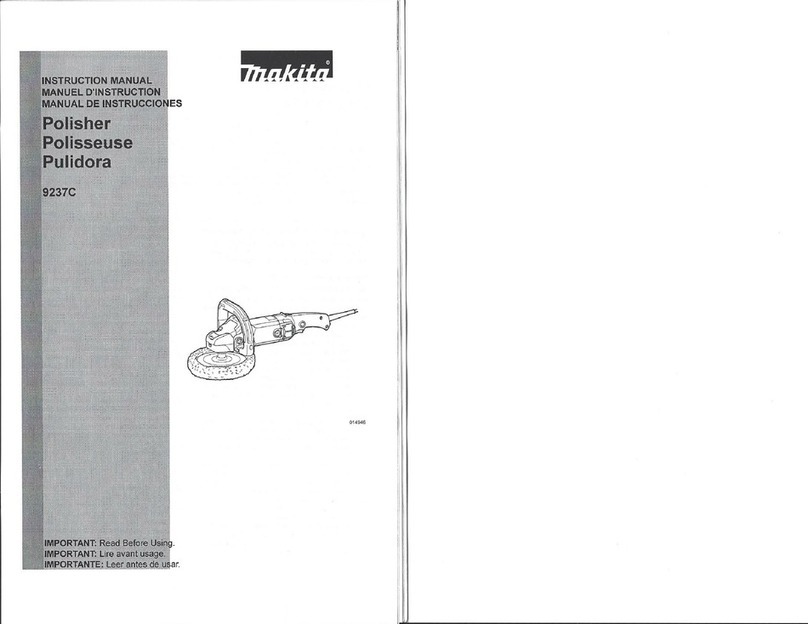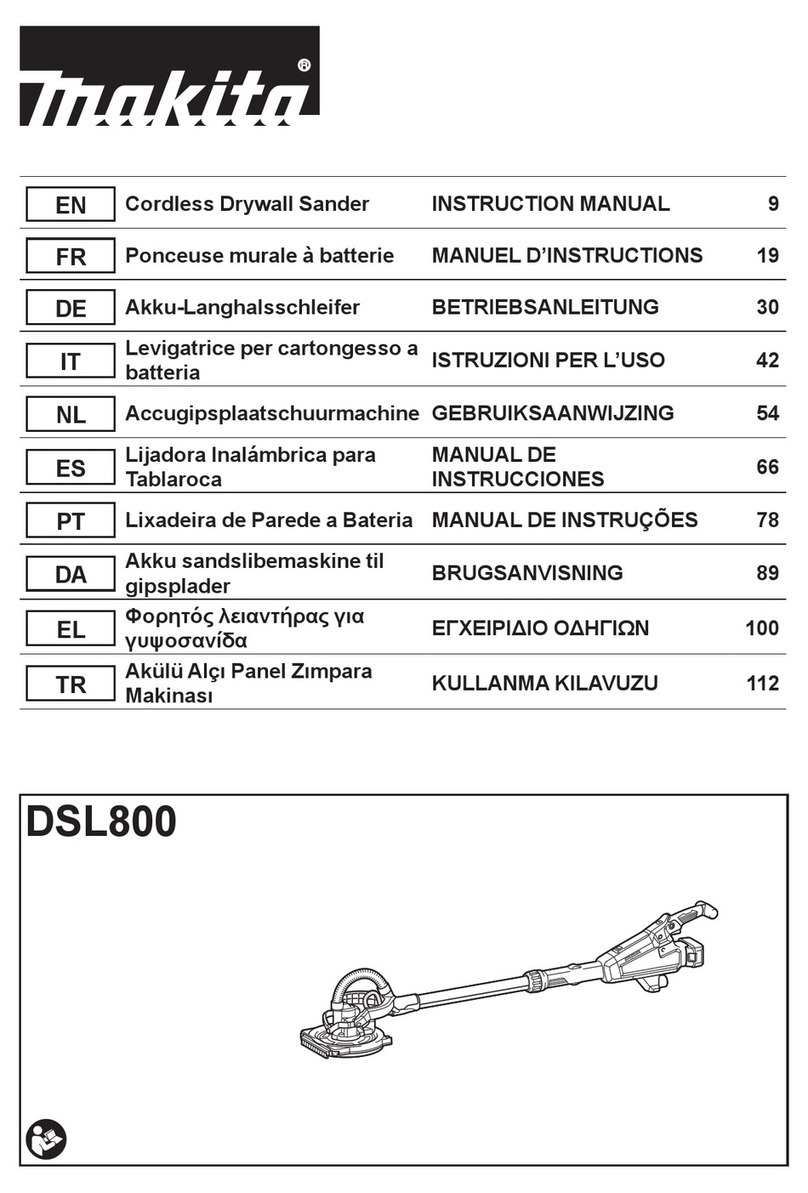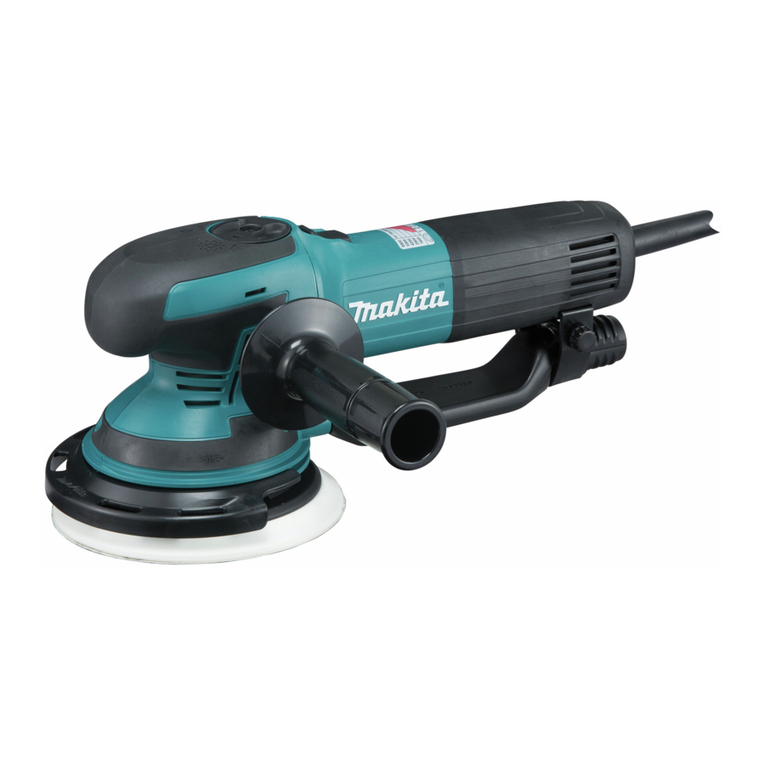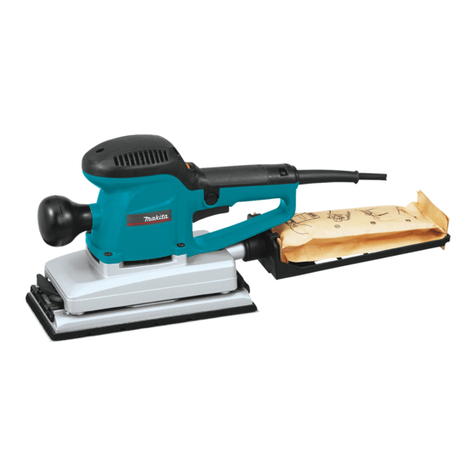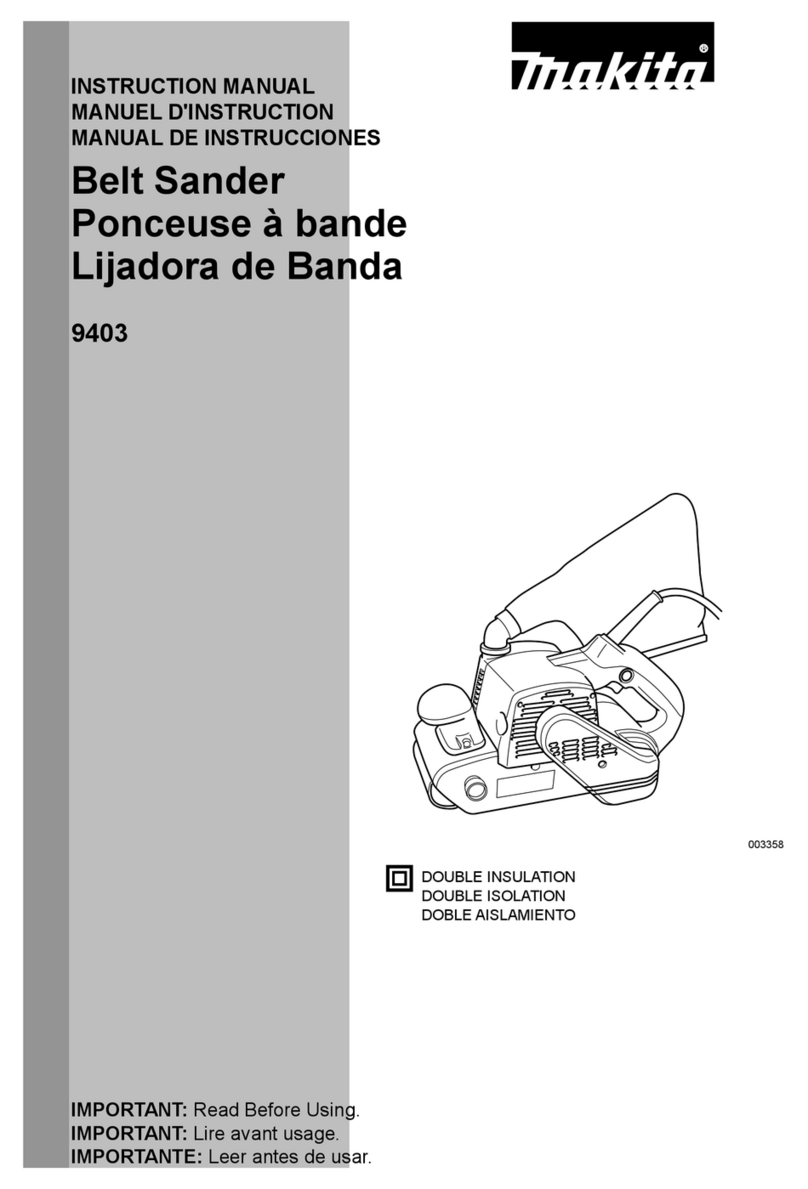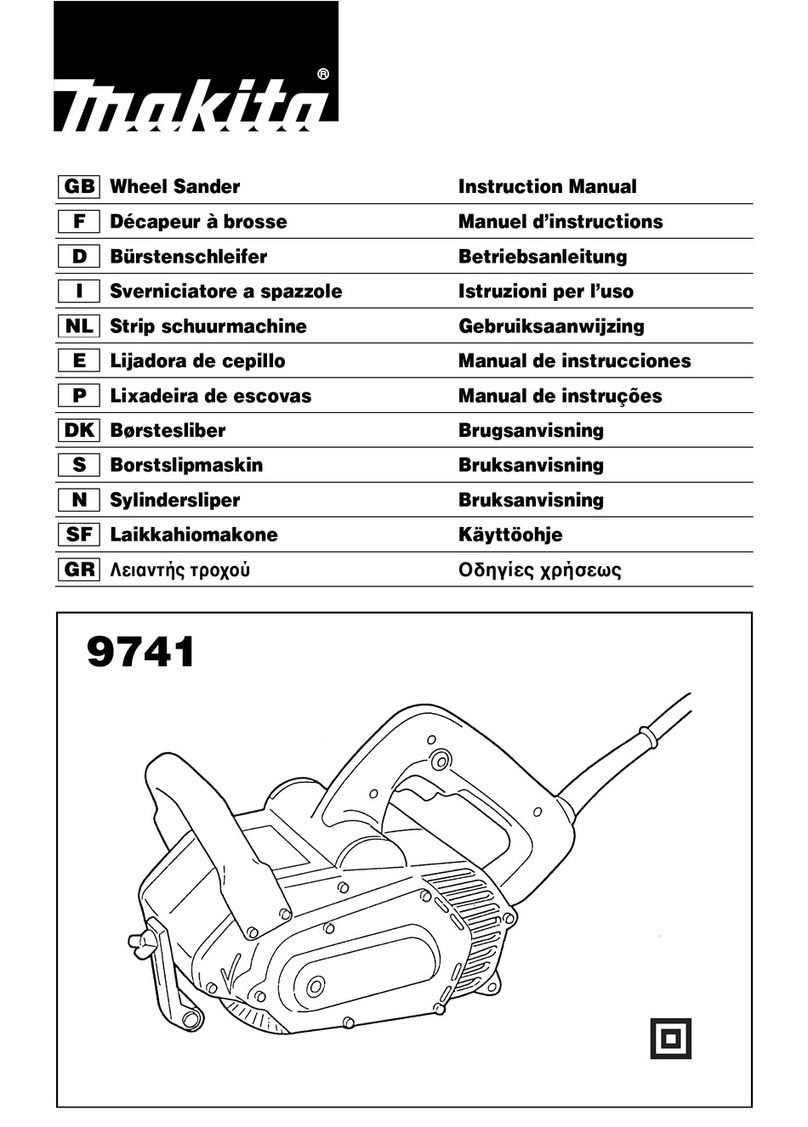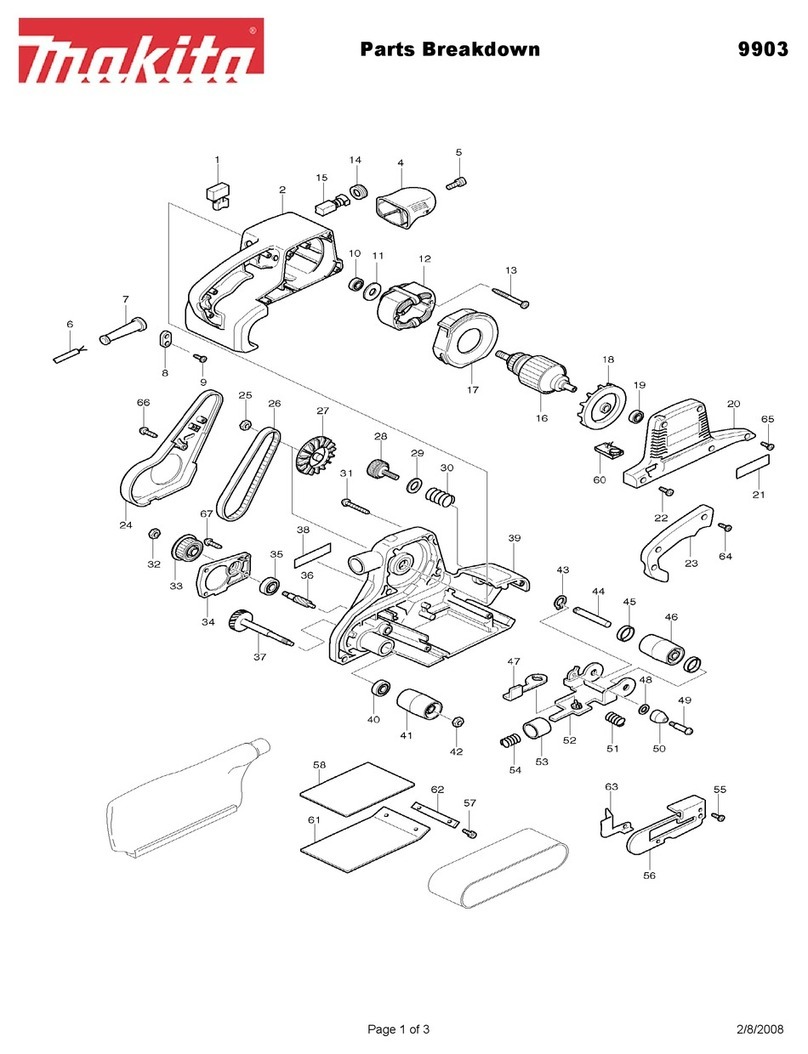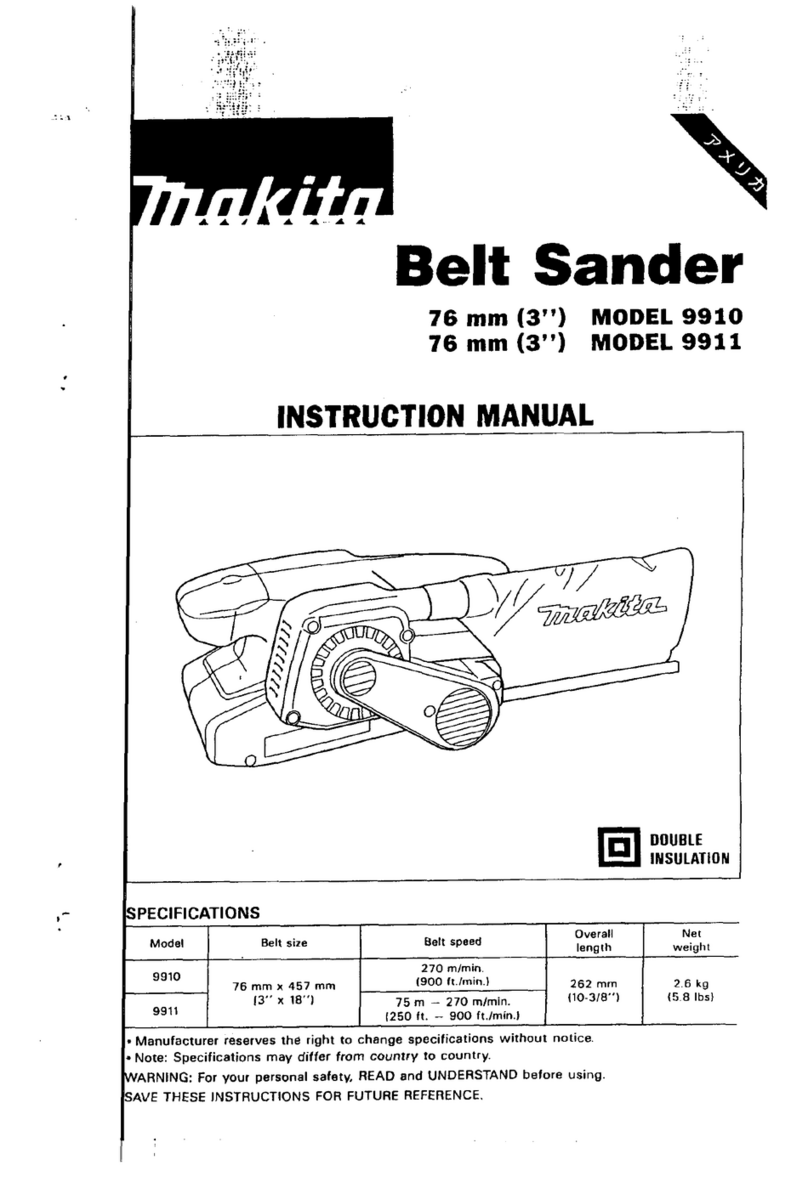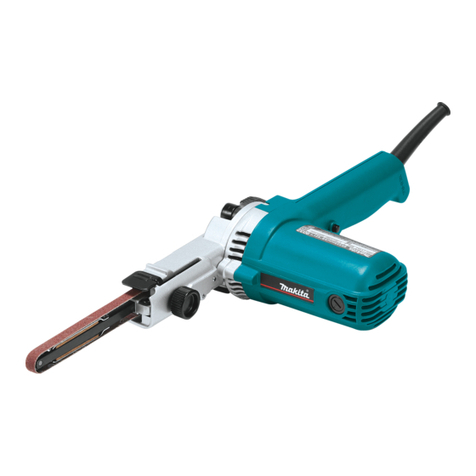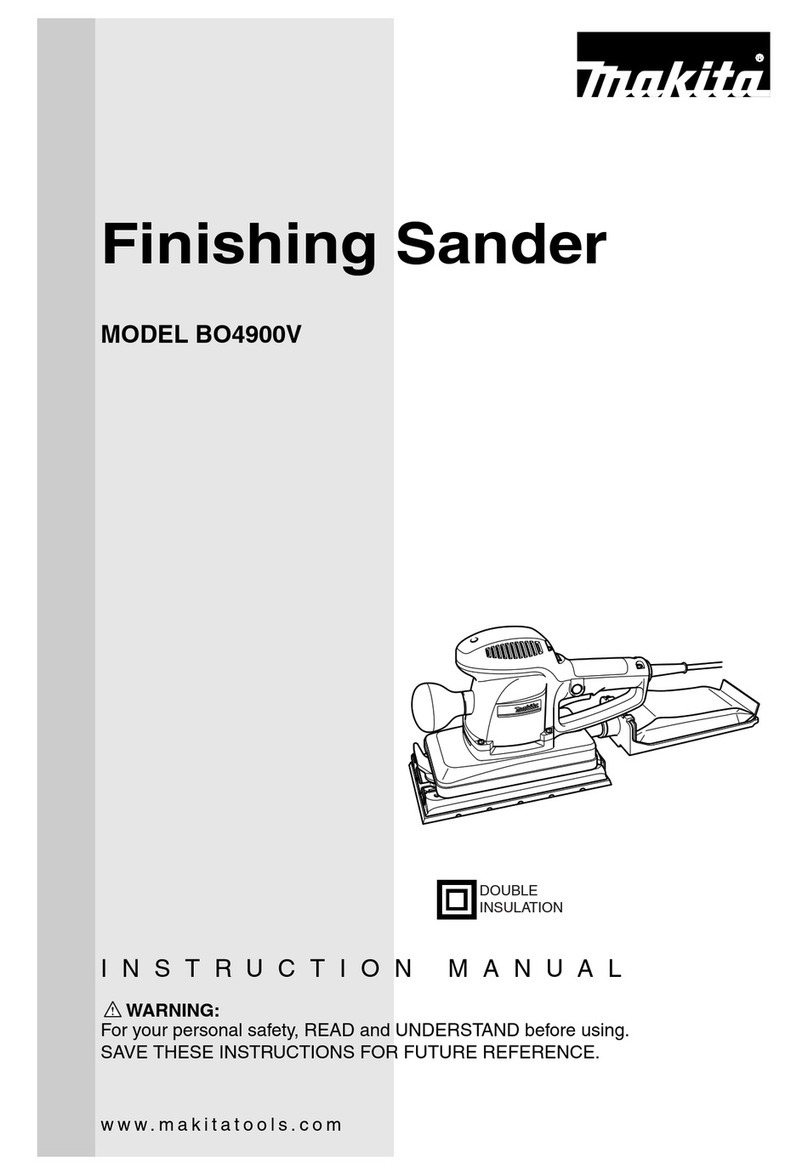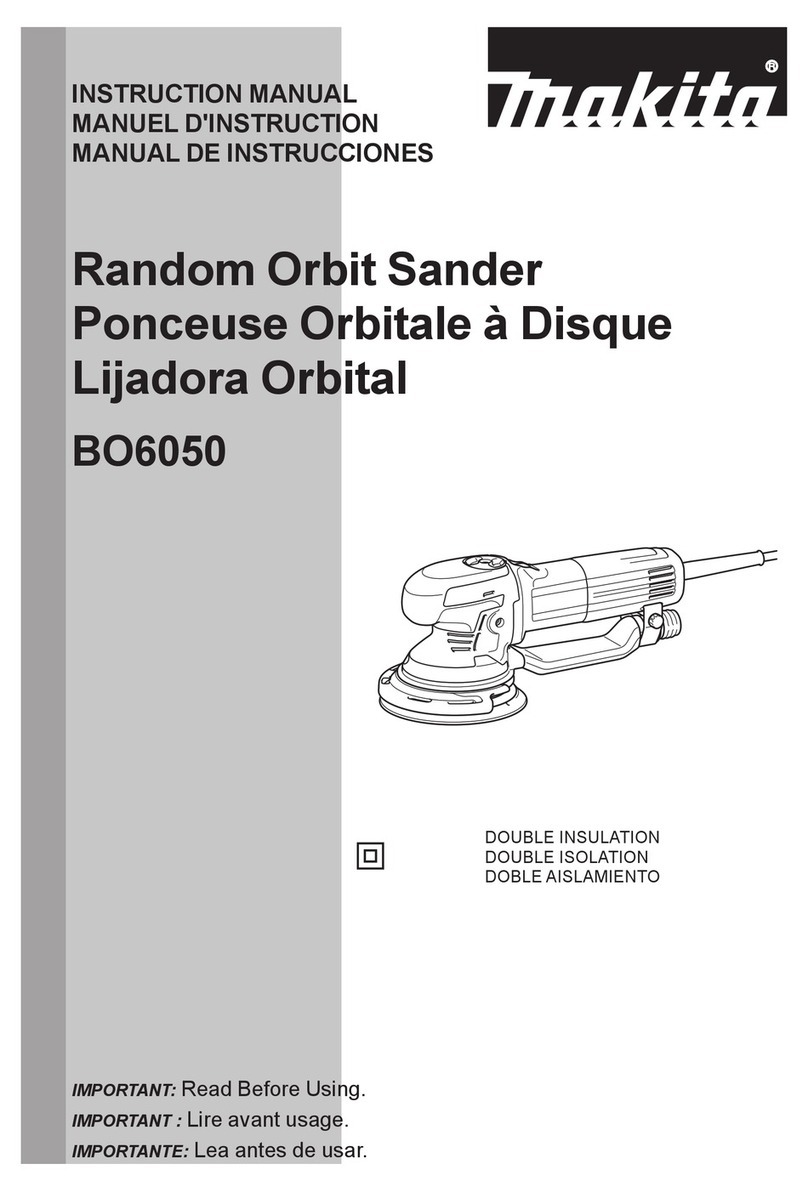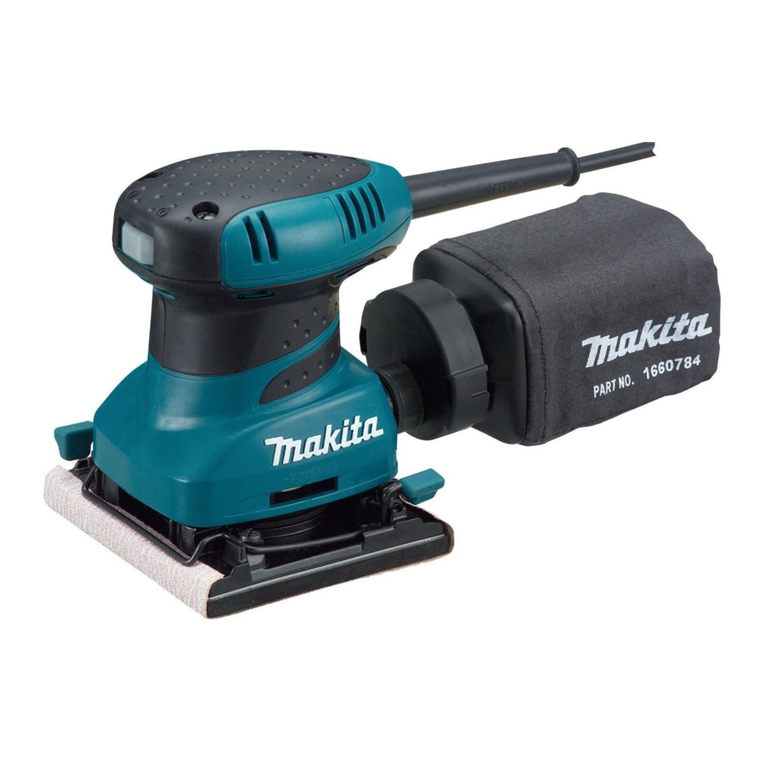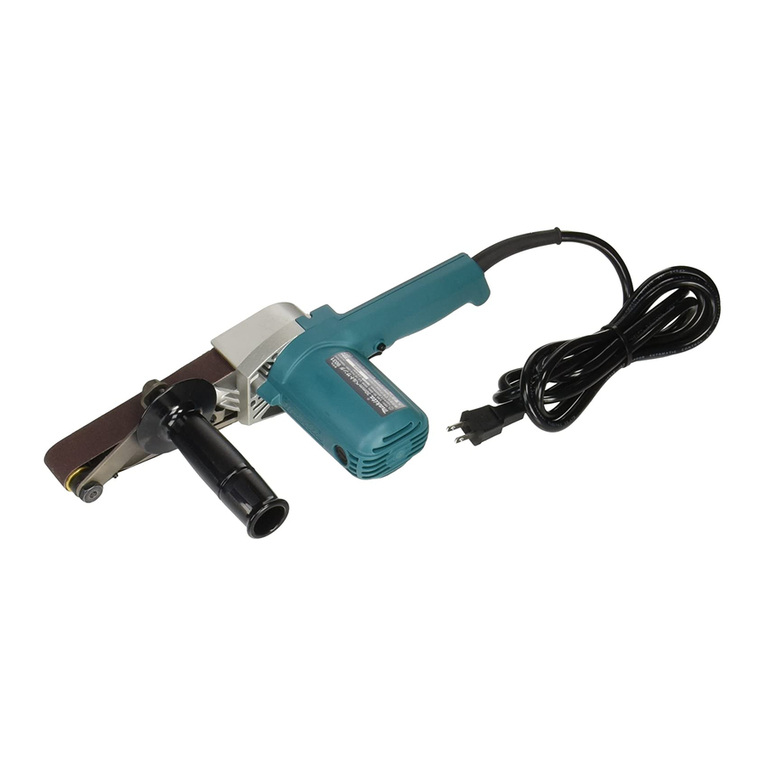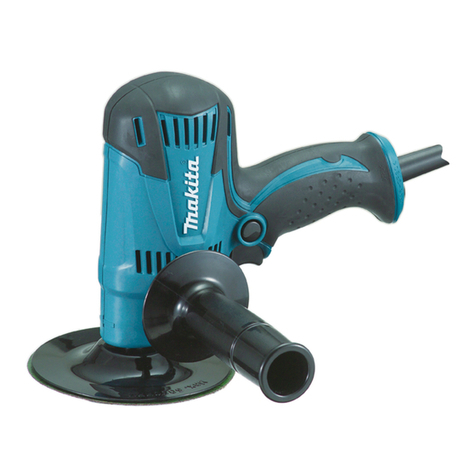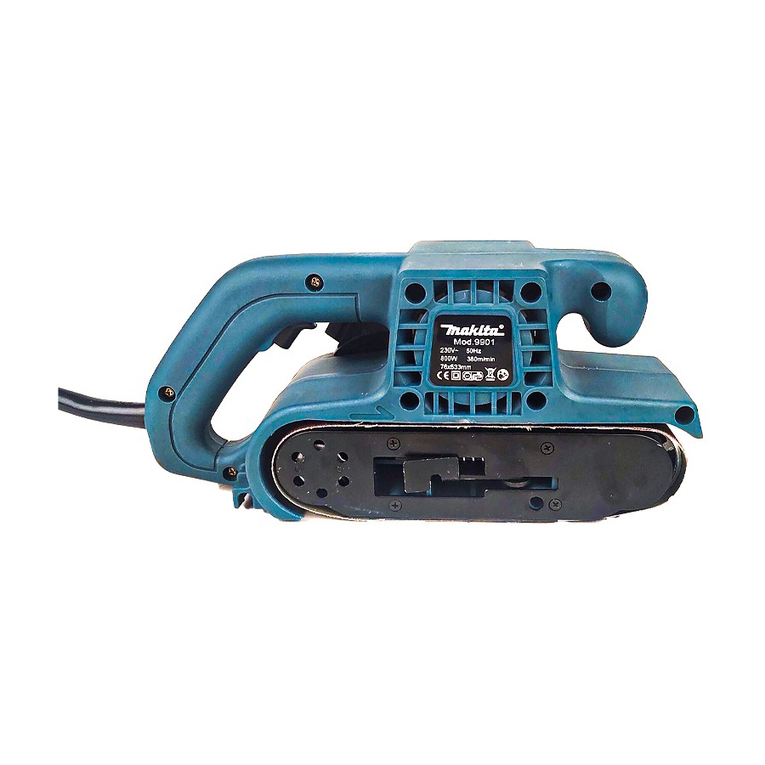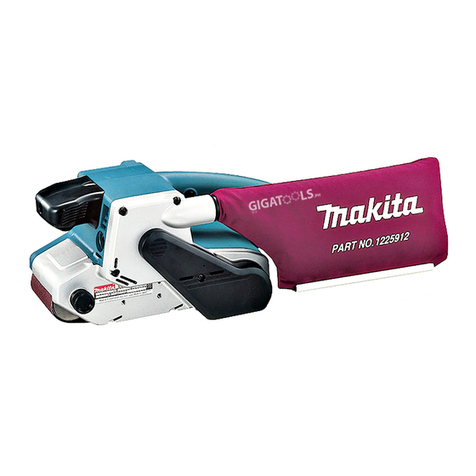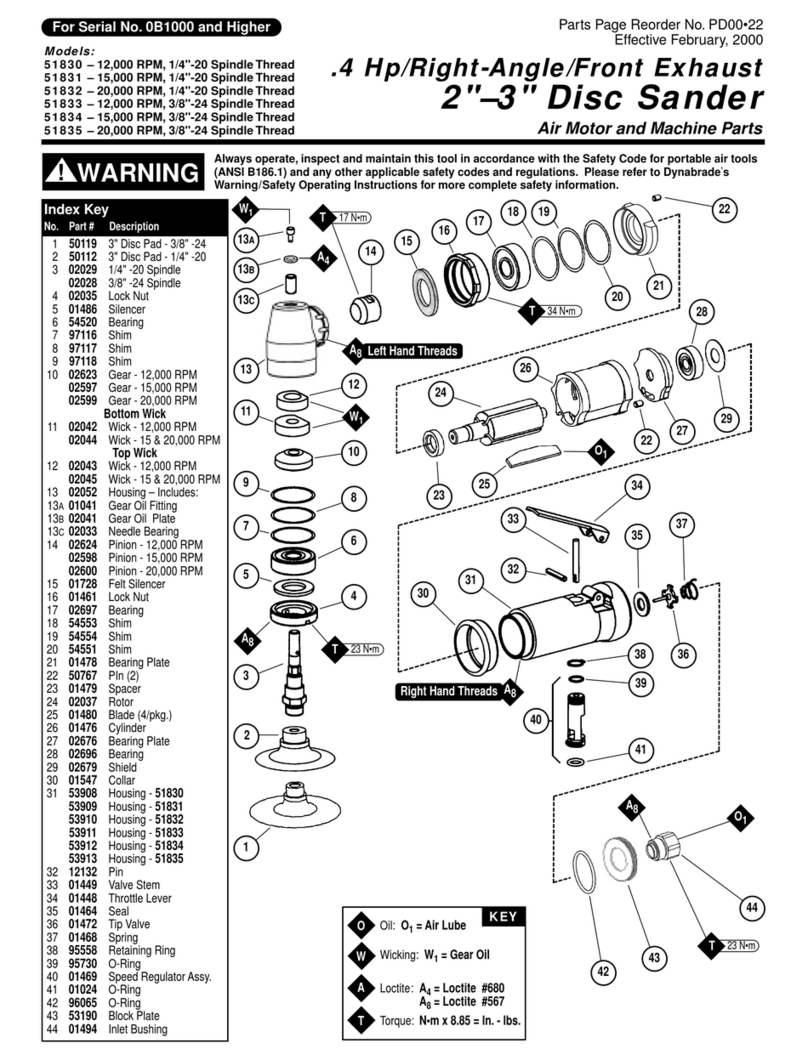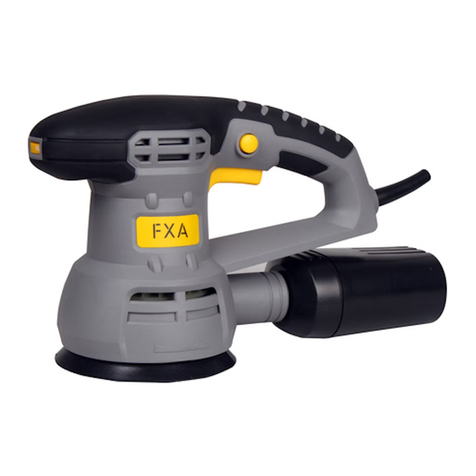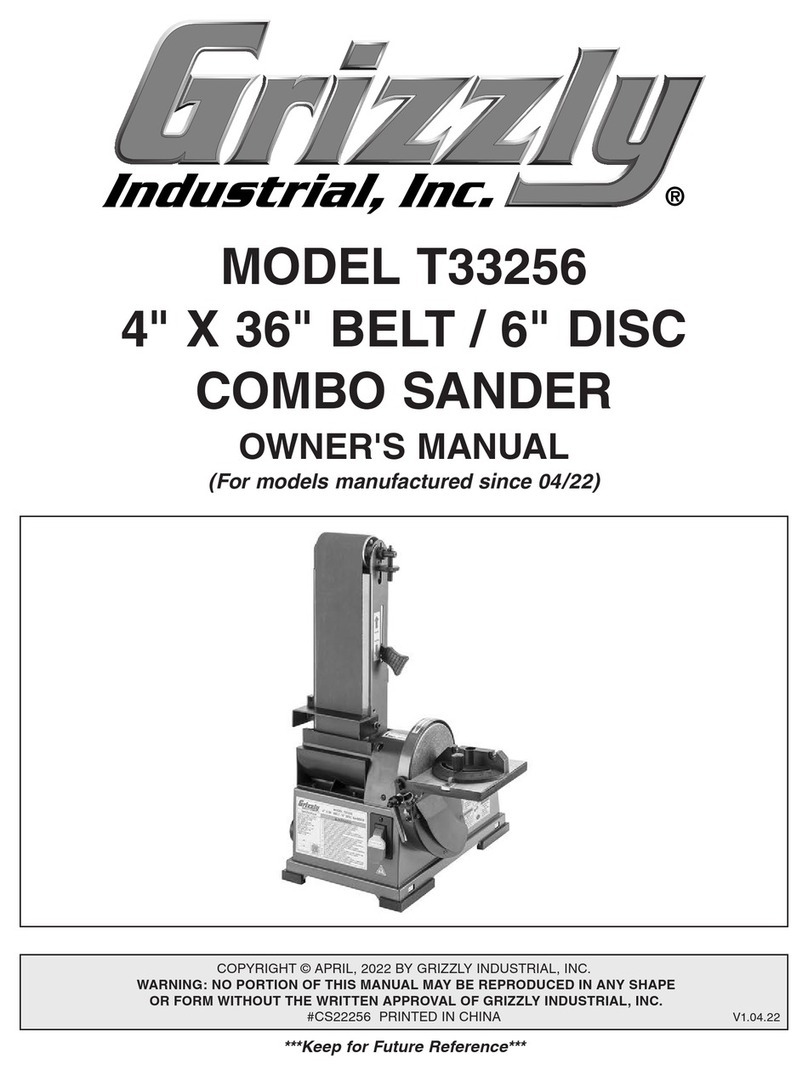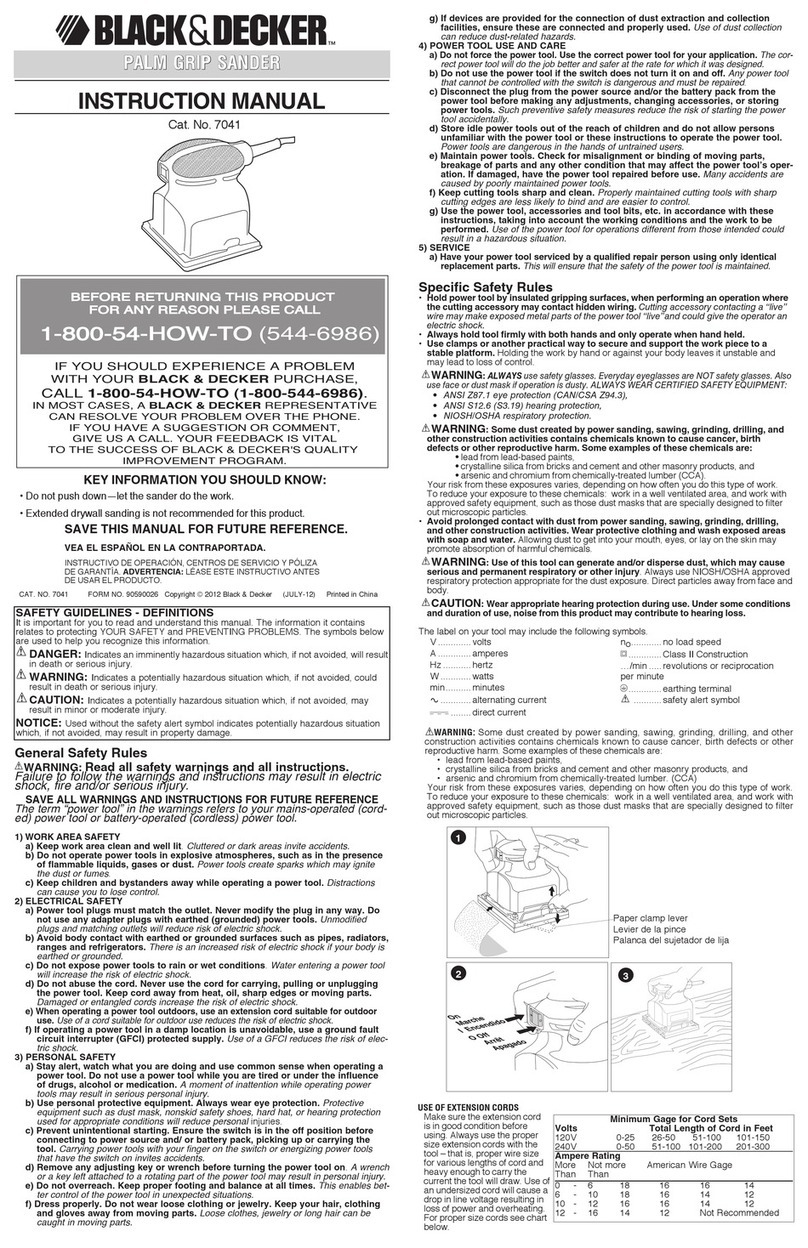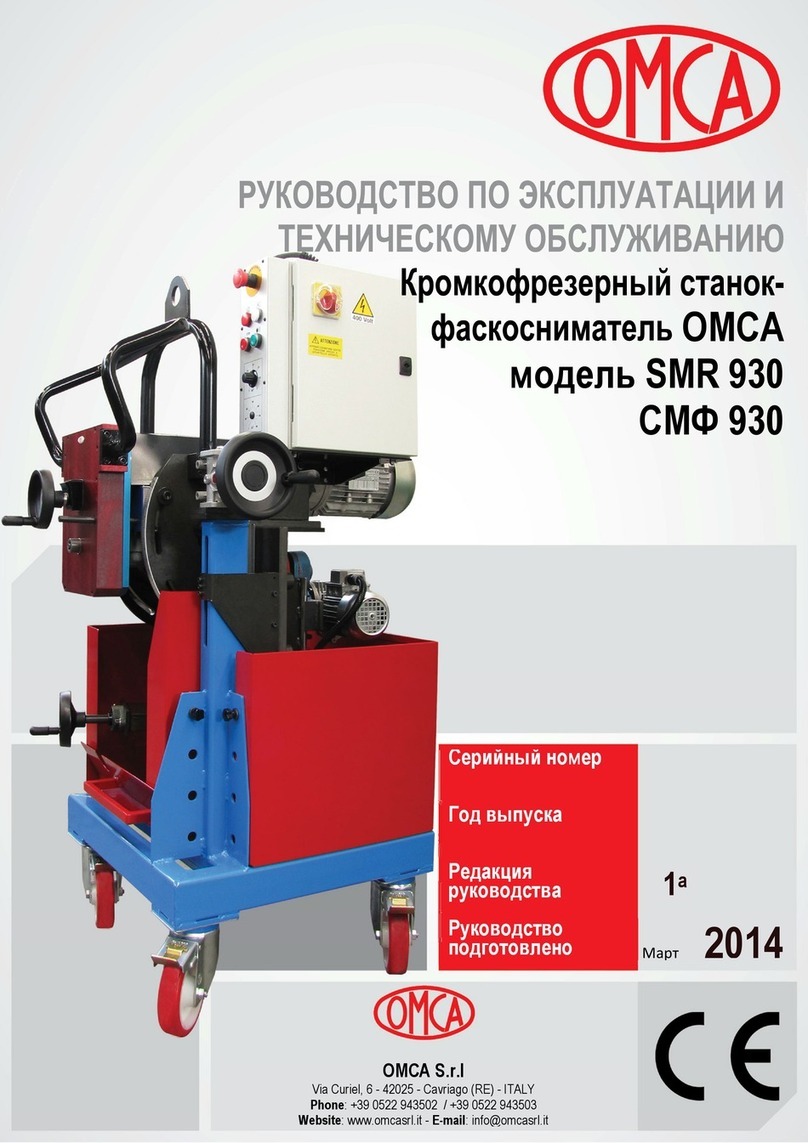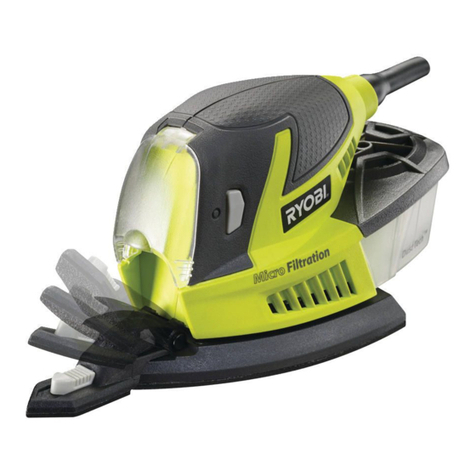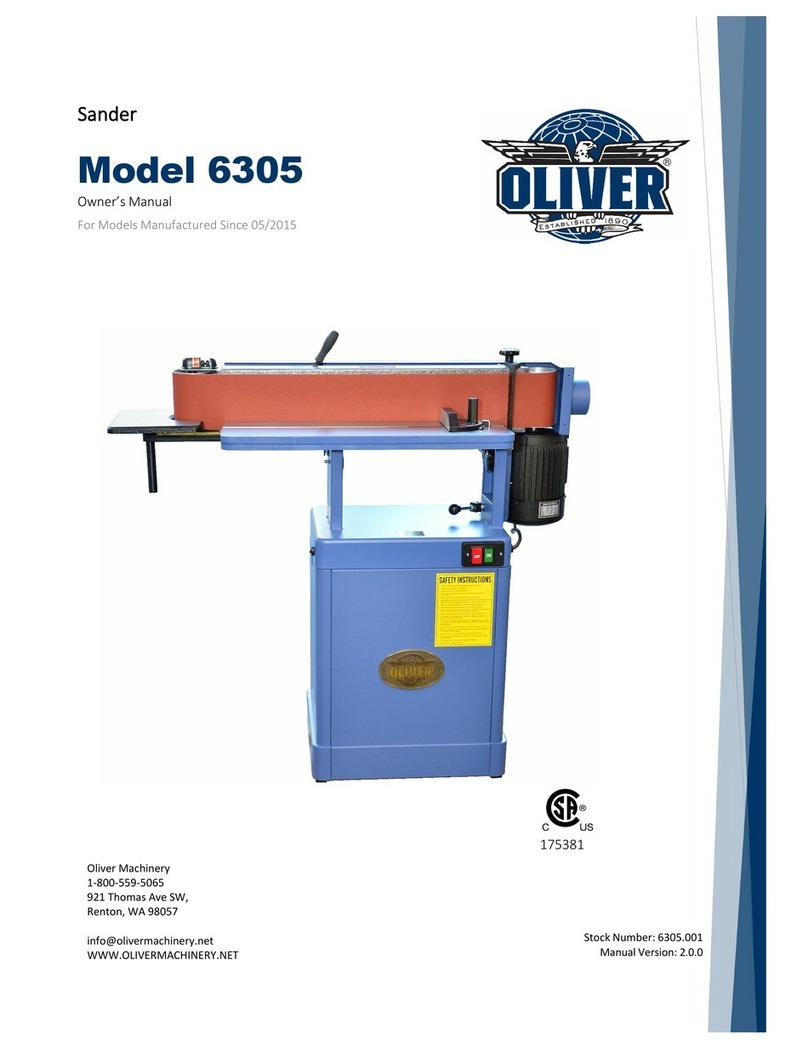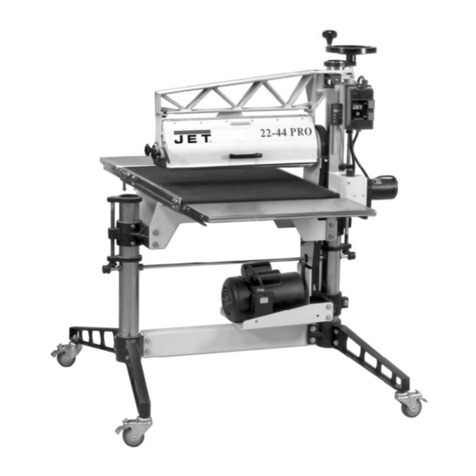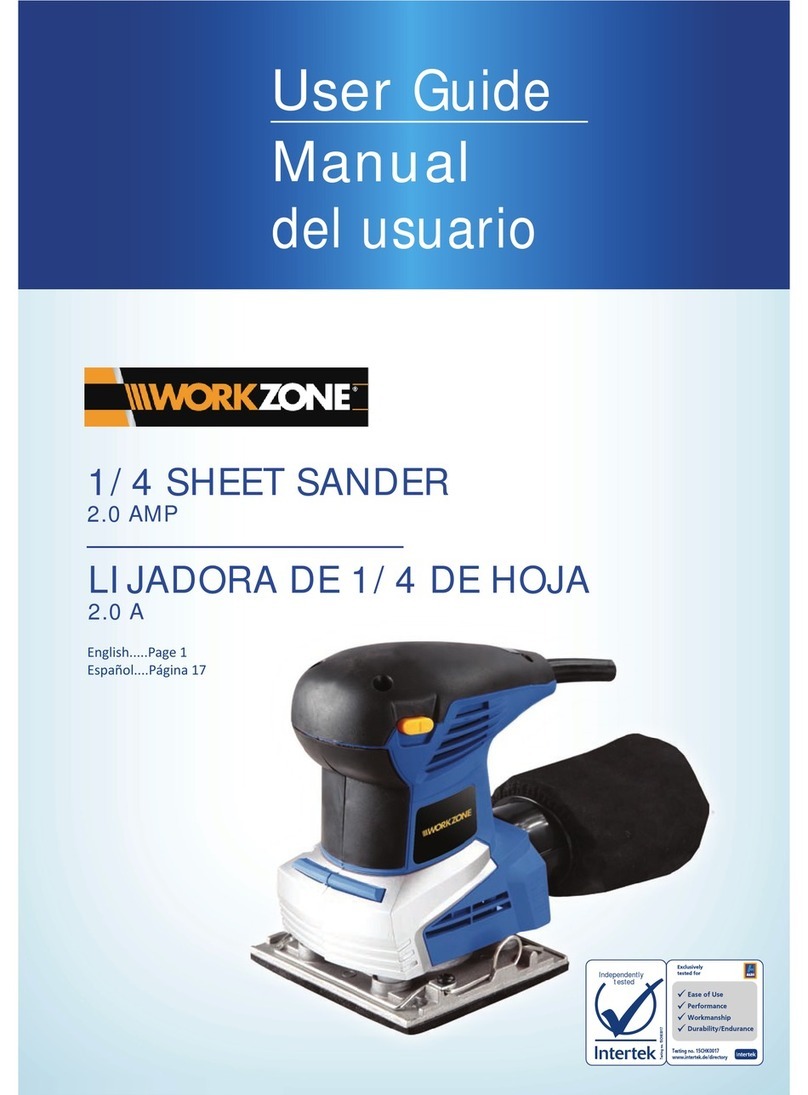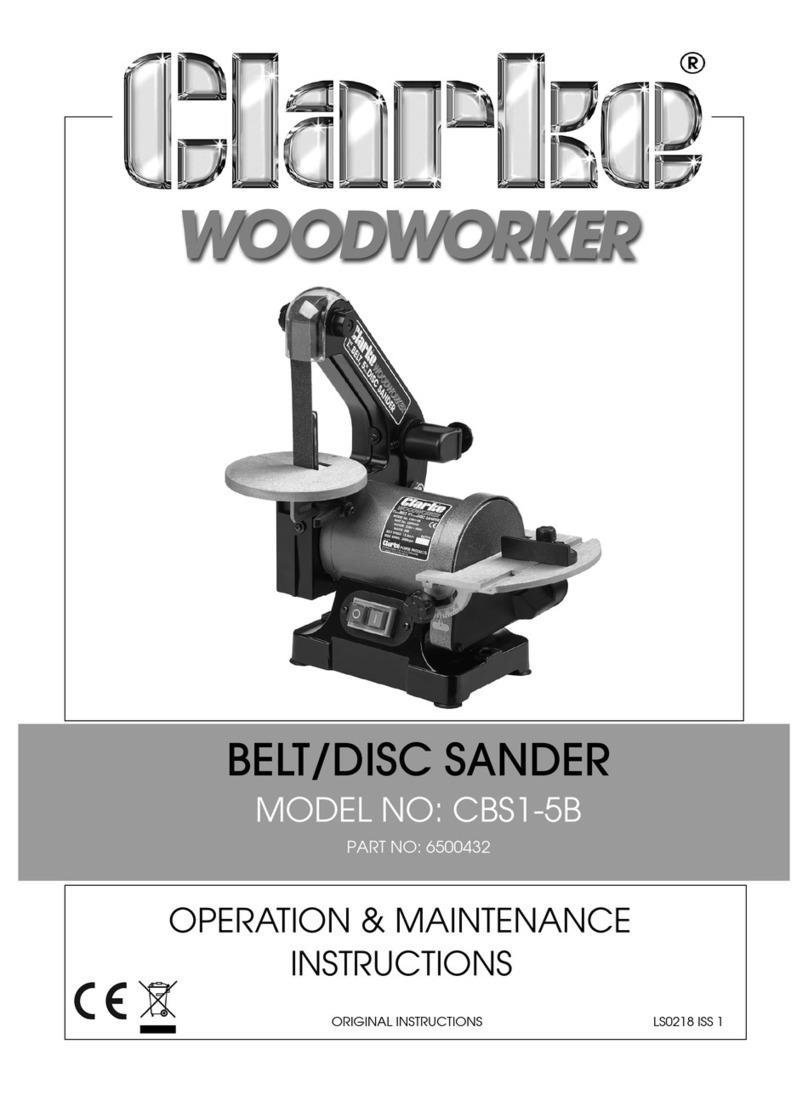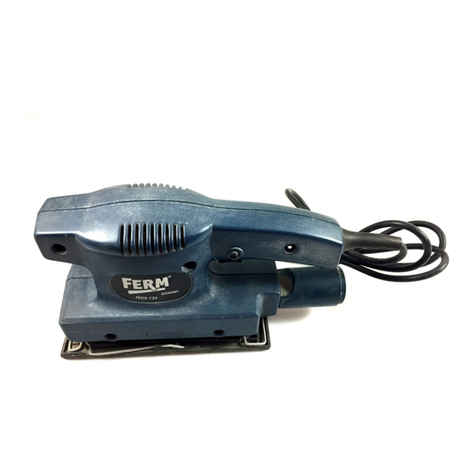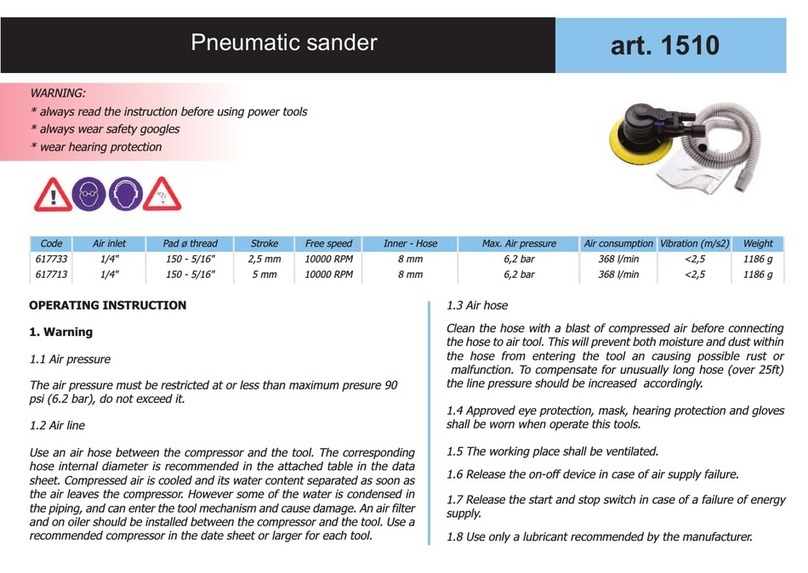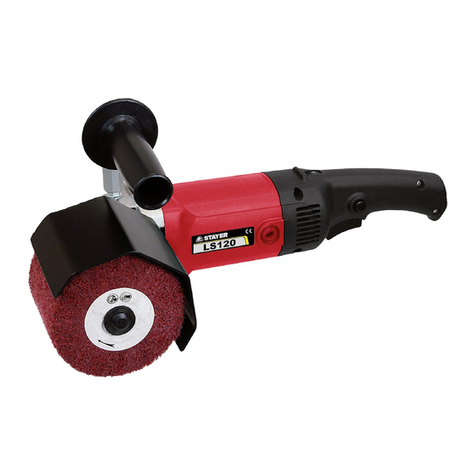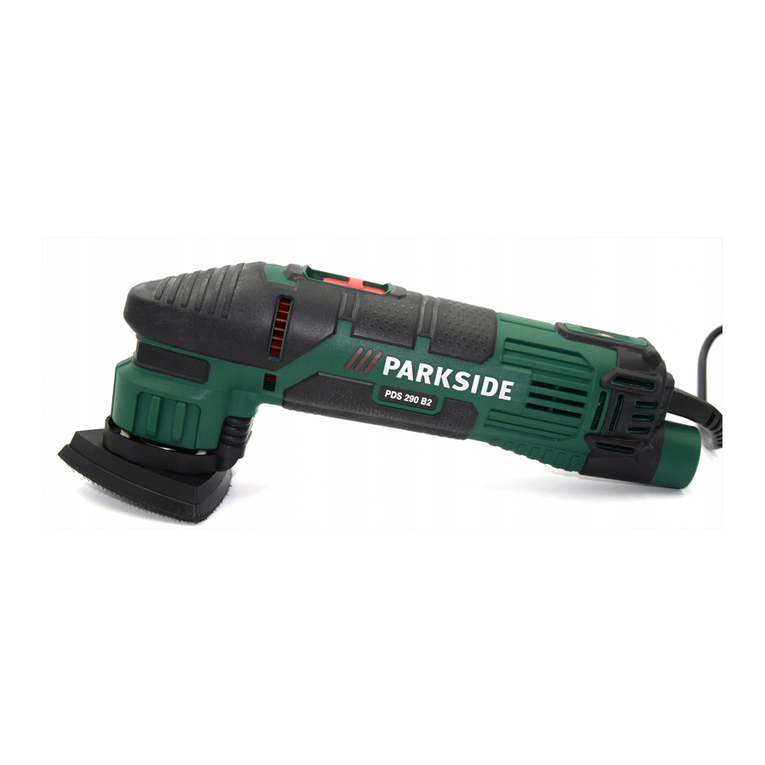
5ENGLISH
4. The rated speed of the accessory must be at
least equal to the maximum speed marked on
the power tool. Accessories running faster than
theirratedspeedcanbreakandyapart.
5. The outside diameter and the thickness of your
accessory must be within the capacity rating
of your power tool.Incorrectlysizedaccessories
cannotbeadequatelyguardedorcontrolled.
6.
Do not use a damaged accessory. Before each
use inspect the accessory such as pad for cracks,
tear or excess wear. If power tool or accessory is
dropped, inspect for damage or install an undam-
aged accessory. After inspecting and installing
an accessory, position yourself and bystanders
away from the plane of the rotating accessory and
run the power tool at maximum no-load speed
for one minute.Damagedaccessorieswillnormally
break apart during this test time.
7.
Wear personal protective equipment.
Depending on application, use face shield,
safety goggles or safety glasses. As appropri-
ate, wear dust mask, hearing protectors, gloves
and workshop apron capable of stopping small
abrasive or workpiece fragments.Theeyepro-
tectionmustbecapableofstoppingyingdebris
generatedbyvariousoperations.Thedustmask
orrespiratormustbecapableofltratingparticles
generatedbyyouroperation.Prolongedexposure
tohighintensitynoisemaycausehearingloss.
8.
Keep bystanders a safe distance away from work
area. Anyone entering the work area must wear
personal protective equipment. Fragments of
workpieceorofabrokenaccessorymayyawayand
causeinjurybeyondimmediateareaofoperation.
9. Position the cord clear of the spinning acces-
sory.Ifyoulosecontrol,thecordmaybecutor
snaggedandyourhandorarmmaybepulledinto
thespinningaccessory.
10. Never lay the power tool down until the acces-
sory has come to a complete stop. The spinning
accessorymaygrabthesurfaceandpullthe
powertooloutofyourcontrol.
11. Do not run the power tool while carrying it at
your side. Accidental contact with the spinning
accessorycouldsnagyourclothing,pullingthe
accessoryintoyourbody.
12. Do not operate the power tool near ammable
materials. Sparks could ignite these materials.
13. Do not use accessories that require liquid
coolants.Usingwaterorotherliquidcoolants
mayresultinelectrocutionorshock.
Kickback and Related Warnings
Kickbackisasuddenreactiontoapinchedorsnagged
rotatingpadoranyotheraccessory.Pinchingorsnag-
gingcausesrapidstallingoftherotatingaccessory
which in turn causes the uncontrolled power tool to be
forcedinthedirectionoppositeoftheaccessory’srota-
tion at the point of the binding.
Forexample,ifapadissnaggedorpinchedbythe
workpiece, the edge of the pad that is entering into the
pinch point can dig into the surface of the material caus-
ingthepadtoclimboutorkickout.Thepadmayeither
jumptowardorawayfromtheoperator,dependingon
directionofthepad’smovementatthepointofpinching.
Padmayalsobreakundertheseconditions.
Kickbackistheresultofpowertoolmisuseand/or
incorrect operating procedures or conditions and can be
avoidedbytakingproperprecautionsasgivenbelow.
1. Maintain a rm grip on the power tool and
position your body and arm to allow you to
resist kickback forces. Always use auxiliary
handle, if provided, for maximum control over
kickback or torque reaction during start-up.
Theoperatorcancontroltorquereactionsorkick-
back forces, if proper precautions are taken.
2. Never place your hand near the rotating acces-
sory.Accessorymaykickbackoveryourhand.
3. Do not position your body in the area where
power tool will move if kickback occurs.
Kickbackwillpropelthetoolindirectionopposite
tothewheel’smovementatthepointofsnagging.
4. Use special care when working corners, sharp
edges etc. Avoid bouncing and snagging the
accessory. Corners, sharp edges or bouncing
haveatendencytosnagtherotatingaccessory
and cause loss of control or kickback.
5. Do not attach a saw chain woodcarving blade
or toothed saw blade. Such blades create fre-
quentkickbackandlossofcontrol.
Safety Warnings Specic for Sanding Operations:
1. Do not use excessively oversized sanding
disc paper. Follow manufacturers recommen-
dations, when selecting sanding paper. Larger
sandingpaperextendingbeyondthesanding
padpresentsalacerationhazardandmaycause
snagging, tearing of the disc or kickback.
Additional Safety Warnings:
1. Do not leave the tool running. Operate the tool
only when hand-held.
2. Check that the workpiece is properly
supported.
3. Pay attention that the pad continues to rotate
after the tool is switched off.
4. If working place is extremely hot and humid,
or badly polluted by conductive dust, use a
short-circuit breaker (30 mA) to assure opera-
tor safety.
5. Do not use the tool on any materials contain-
ing asbestos.
6. Do not use cloth work gloves during operation.
Fibersfromclothglovesmayenterthetool,which
causes tool breakage.
7. Always work in well ventilated area.
8. When placing the tool, place it on a at and
stable surface.
9. When operating the tool, connect the tool to a
vacuum cleaner as much as possible to keep
the working area clean and prevent the oper-
ator from inhaling particles generated by the
operation.
SAVE THESE INSTRUCTIONS.
WARNING: DO NOT let comfort or familiarity
with product (gained from repeated use) replace
strict adherence to safety rules for the subject
product. MISUSE or failure to follow the safety
rules stated in this instruction manual may cause
serious personal injury.
